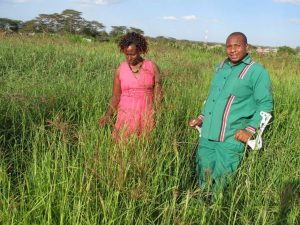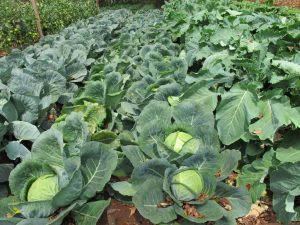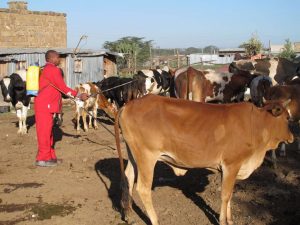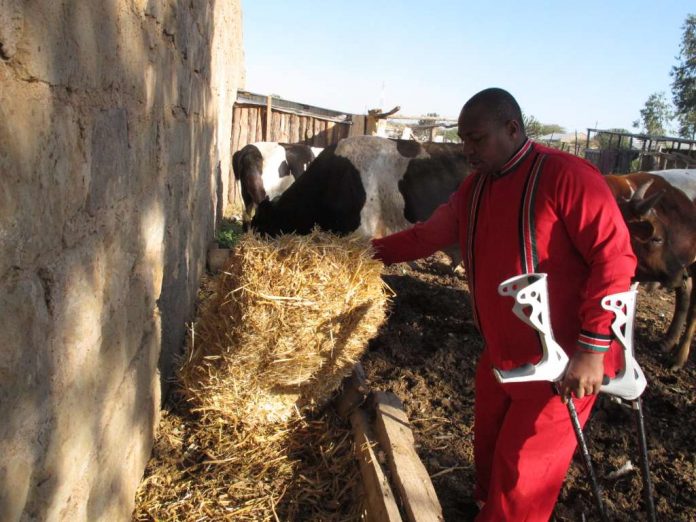David Sankok has over 50 acres under a variety of crops including maize, tomatoes and french beans. He also has a orchard with fruits like mangoes, pawpaws and avocados. Besides crop cultivation, he also keeps livestock.
Currently, he has 25 dairy cows, two exotic bulls and 11 calves in addition to the close to 200 local cattle which are bought and sold on yearly basis. He also has five acres of land under eucalyptus trees. He also grows lucern in five acres of his farm bordering Ewaso Ng’iro River in Narok county.

So, when and how did his passion for farming start?
Born and brought up in the Maasai pastoralist community in Melili, Entoltol sub-location in Narok, Sankok says he dreamt of going against the grain and venturing into crop farming.
“I promised myself to venture into large-scale farming instead of growing crops on a small piece of land,” he recalls. He is upbeat about achieving his dream.
After completing his high school education at Kericho High School in 1996, Sankok joined the University of Nairobi and later Bergen University in Norway for studies.
Though he had hoped to embark on farming immediately after high school, he had to put his dreams on hold due to lack of capital.

While at the university, he saved any money he got and bought a five-acre piece of land in the Mau Belt at a cost of Sh.75,000. He then bought eucalyptus seedlings and planted them on his farm.
Sankok says the tree project cost him Sh100,000 and after six years, in 2005, he sold all the trees and made Sh3 million.
At the time, a severe drought had hit Narok and cattle were dying in large numbers, forcing the locals to sell them at throwaway prices to avoid huge loses.
Sankok went on to buy 100 cows at a cost of Sh200,000 using part of the money he got from the sale of trees.
“The animals were skinny, emaciated and some could not even stand. At some point, l looked at them and wondered why l had invested a substantial amount of money on animals l knew would not survive,” he recalls.
However, he treated the animals hoping that they would turn out okay. First, he gave them the right feeds and then sought the services of a veterinary doctor for treatment and advice on how best to manage them.
“The veterinary doctor treated them and told me to give them the right feeds and they would bounce back. I sourced for hay and grass very far away from the town,” he says.
Within two months, he lost five cattle but fortunately, 15 of them calved. He sold them after 10 months at a cost of between Sh30,000 and Sh50,000.

Through the profits he made from the cattle, he invested in dairy farming and crop cultivation. He gets more than 100 litres of milk daily.
Sankok says he is happy and comfortable with what he earns but despite his achievements, he faces a number of challenges.
“During long periods of drought, I end up spending a lot of money to purchase feeds for the livestock. I also have to look into ways to put the farms under irrigation since the river sometimes dries up and therefore halting farming activities,” he explains.








